The data stream for cities of short distances
Cities of short distances need thriving neighborhoods. We connect local businesses and facilities and provide unique data for spatial, transportation, and location planning
Global urban shift
Whether it’s a 15- or 20-minute city, a city of short distances, a complete or walkable neighborhood – all these concepts share one thing in common: short distances. However, geographical, cultural, and historical differences lead to varying requirements. That’s why our data is based on local real-time market data that reflects these differences.

Real-time market data
We collect current location data from various platforms and industries and connect nearby locations. Platforms use this proximity data to strategically enhance their own locations. We provide cities with this comprehensive data pool to open up new perspectives for urban planning.

Multidimensional location calculation
Our calculations go beyond using the home as the starting point, incorporating workplaces and holiday homes to gain a more comprehensive understanding of the market situation and development trends with regard to short-distance routes. Based on this, predictive AI can be used to develop well-founded future scenarios.

Align goals with city needs
Areas and their categories can have different time goals for various modes of transport. For daily essentials, goals may focus on walking, while centralized essential services like hospitals may be defined for public transportation.

Identify gentrification
Walkable neighborhoods are highly sought after, economically successful, and often attract wealthier groups. Their appeal lies in the short distances to everyday amenities and leisure activities. Gentrification is a common consequence. We collect data on price and income levels, access to essential services, and other factors that help identify such developments early on.

Regional differences
Cities and neighborhoods differ in geographical, cultural, and historical characteristics, which influence the daily needs of residents. These differences are shaped by the interplay of supply and demand. Thanks to our economic network, we can analyze these factors and provide valuable, region-specific data.

Contact us
Every city is unique, with its own economic and political conditions, as well as individual priorities. Contact us so we can provide the right data and tools together and work towards the vision of a city of short distances.
